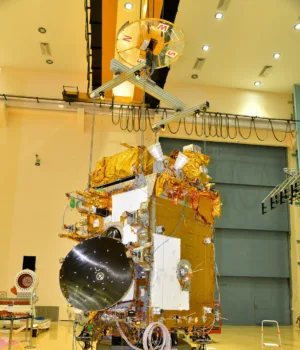Aditya-L1, the first space-based Indian observatory to study the Sun, is getting ready for the launch, tweeted ISRO.
The satellite realised at the U R Rao Satellite Centre (URSC), Bengaluru has arrived at SDSC-SHAR, Sriharikota.
Aditya L1 shall be the first space based Indian mission to study the Sun. The spacecraft shall be placed in a halo orbit around the Lagrange point 1 (L1) of the Sun-Earth system, which is about 1.5 million km from the Earth. A satellite placed in the halo orbit around the L1 point has the major advantage of continuously viewing the Sun without any occultation/eclipses. This will provide a greater advantage of observing the solar activities and its effect on space weather in real time.
The spacecraft carries seven payloads to observe the photosphere, chromosphere and the outermost layers of the Sun (the corona) using electromagnetic and particle and magnetic field detectors. Using the special vantage point L1, four payloads directly view the Sun and the remaining three payloads carry out in-situ studies of particles and fields at the Lagrange point L1, thus providing important scientific studies of the propagatory effect of solar dynamics in the interplanetary medium
The suits of Aditya L1 payloads are expected to provide most crucial informations to understand the problem of coronal heating, coronal mass ejection, pre-flare and flare activities and their characteristics, dynamics of space weather, propagation of particle and fields etc.
SCIENCE OBJECTIVES:
The major science objectives of Aditya-L1 mission are –
• Study of Solar upper atmospheric (chromosphere and corona) dynamics.
• Study of chromospheric and coronal heating, physics of the partially ionized plasma, initiation of the coronal mass ejections, and flares
• Observe the in-situ particle and plasma environment providing data for the study of particle dynamics from the Sun.
• Physics of solar corona and its heating mechanism.
• Diagnostics of the coronal and coronal loops plasma: Temperature, velocity and density.
• Development, dynamics and origin of CMEs.
• Identify the sequence of processes that occur at multiple layers (chromosphere, base and extended corona) which eventually leads to solar eruptive events.
• Magnetic field topology and magnetic field measurements in the solar corona .
• Drivers for space weather (origin, composition and dynamics of solar wind .
ISRO also provided an update on Chandrayaan-3 Mission, tweeting: “Orbit circularisation phase commences; Precise maneuvre performed today has achieved a near-circular orbit of 150 km x 177 km. The next operation is planned for August 16, 2023, around 0830 Hrs. IST.”







